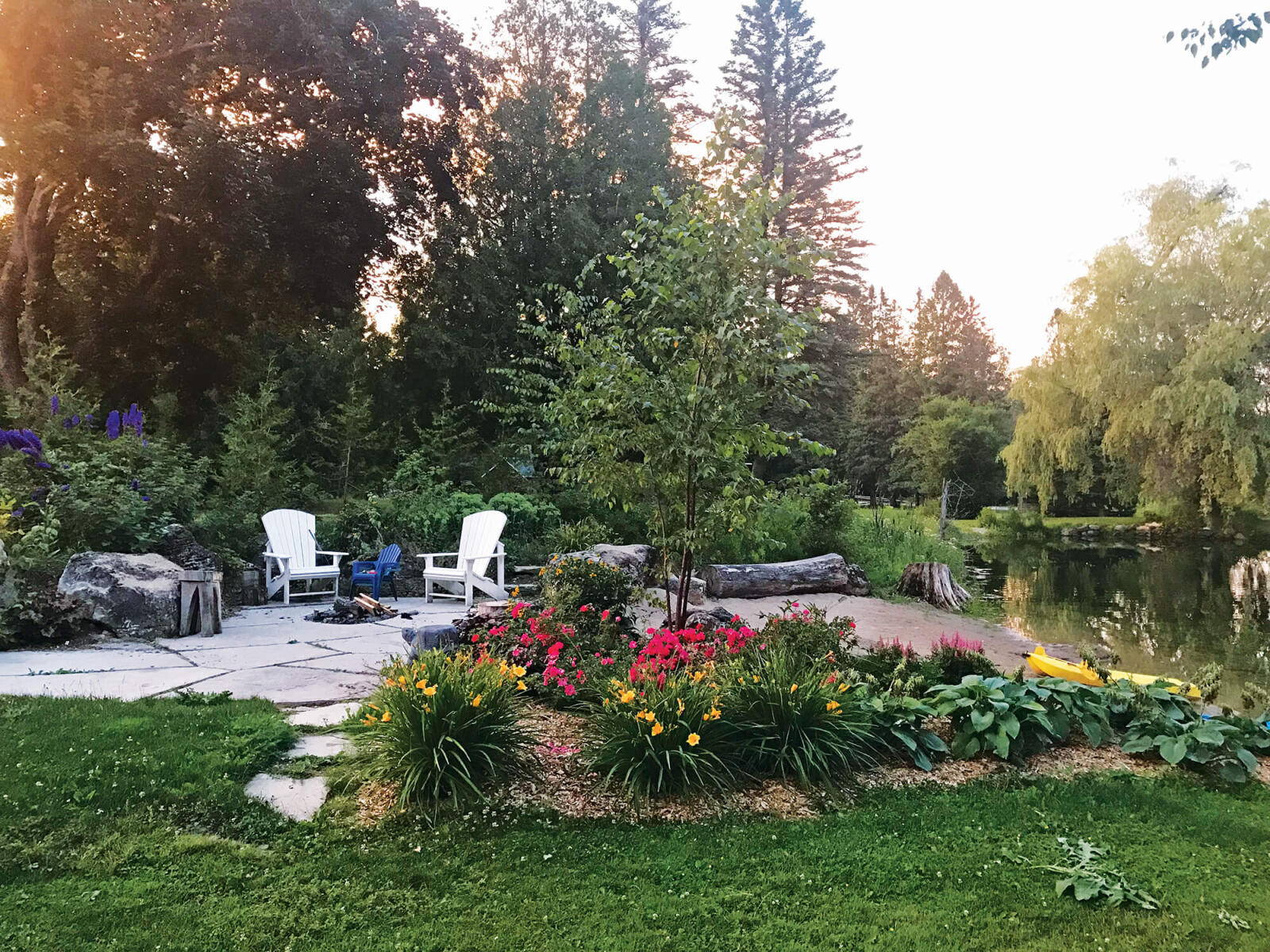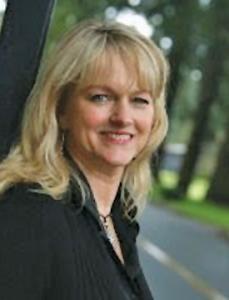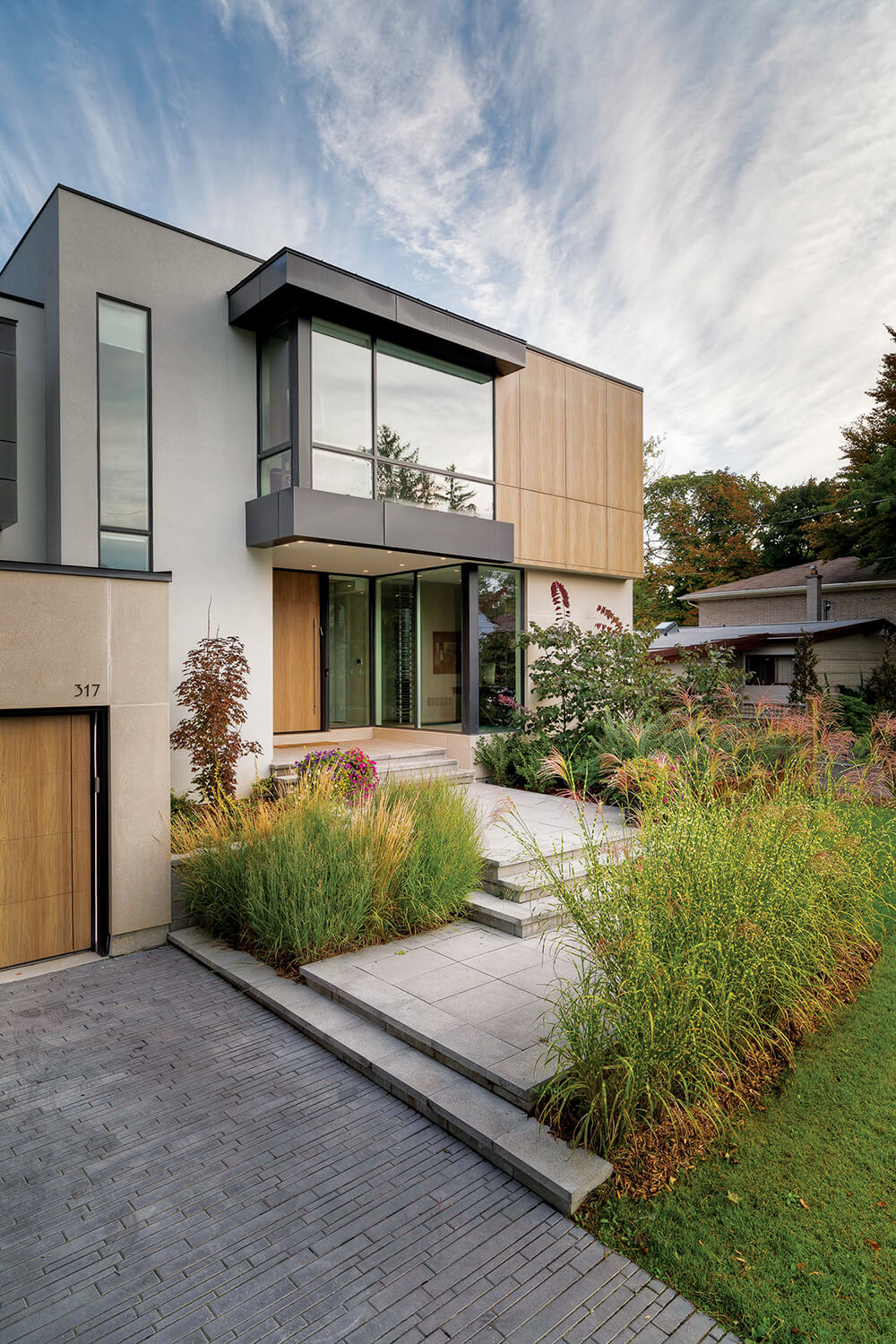November 1, 2019

A redesigned and reconstructed sustainable ecosystem designed by Randy Tumber features biological filtration, floating wetlands technology and waterfalls, surrounded by many natives including cedar, birch and dogwood — with some ornamental embellishments, of course.
This just trending...
BY AUDRIANA VANDERWERF CLD
 It is amusing to see gardening magazines on the tables at doctors’ offices, with the covers inevitably claiming the most current garden is inside. Curiosity turns the pages … what is the public finding out that I don’t know? But more often than not, these magazines explore ideas long used by landscape design professionals, or detailed ‘must-have trends’ that simply couldn’t last the test of time. Remember railway-tie retaining walls? Oh, the creosote!
It is amusing to see gardening magazines on the tables at doctors’ offices, with the covers inevitably claiming the most current garden is inside. Curiosity turns the pages … what is the public finding out that I don’t know? But more often than not, these magazines explore ideas long used by landscape design professionals, or detailed ‘must-have trends’ that simply couldn’t last the test of time. Remember railway-tie retaining walls? Oh, the creosote! However, the idea of trends persists, and finding that right combination of classic and contemporary elements to complement the home’s architecture is often our task.
Len Hordyk, Director of Landscape Design at Cedar Springs Landscape Group, Oakville, Ont., agrees. “Over the last number of years, landscape style has been trending towards a cleaner, more modern look and feel.” This contemporary linear look, with clean shapes, is not appropriate for every property, however. Architecture and ambiance play a very large role in which trending style to incorporate, just as they do with the overall design. “Since most of the homes in the areas we work are not modern, we can’t go completely modern, so we have to adopt what we call a transitional style, which incorporates modern elements and materials into the design,” says Hordyk.
Architecture aside, there are other integral landscape design style influencers: the client, the budget and … the designer! I have often pulled back the reins on homeowners anxious to undertake the sleek lines of concrete and rows of manicured boxwoods they saw at their friends’ homes. Instead, I open their eyes to the custom potential that their own property is bursting to reveal. As a representative of a profession people now seek not only to beautify their homes, but to actually help decrease their ‘footprint.’ I love the look in their eyes when my descriptions seep in and they can share my vision.
Some designers forego the very idea of trends altogether. “Many years ago, I became quite weary of the constantly changing trends and fads that so quickly came and then went out of style,” says Randy Tumber, principal, Tumber International Landscape Training. “Because of the transitory nature (of fads), I determined to sidestep as much of it as I could by gaining a more accurate understanding and appreciation of the elements and natural processes found in creation, which I have always maintained don’t really ever go out of style.”
While Randy admits his approach appeals to a more narrow niche market, it’s the big picture and sustainability that encourages his passion.
Why would his market be narrower? Clients who call upon us are interested in sustainable designs, are they not? Or is it the prevailing trend that sells the design?
Marketing plays a large role in helping people believe what they want to see, as does “Keeping up with the Joneses.” As Steve Adcock writes, “Keeping up with the Joneses means we’re keeping up with our vision for success, and it usually revolves around our neighbor.” We cannot dismiss the idea that trends in landscaping are just darn aesthetically pleasing to many people!
Internationally, there is a consumer movement to be more environmentally aware; a trend we can only hope is not temporary. Locally, landscape professionals can design gardens according to the new Fusion Landscaping program. According to a story in Landscape Ontario magazine, “Fusion landscapes are on trend, and thrive from rainwater. Fusion landscaping aims to use this valuable resource on-site through the installation of Low Impact Design (LID) technologies such as rain gardens, bioswales, infiltration trenches and permeable pavers. These LID technologies aim to capture and allow stormwater to be used on-site, instead of being directed away from the property. Using an innovative and holistic approach, Fusion landscaping addresses current environmental concerns such as bio-diversity, sustainability and climate change issues including stormwater management and water conservation.”
Trend, fad, or movement, let’s all make water-wise sustainability our goal.
Audriana VanderWerf is an Ontario-based landscape design pro and a Certified Landscape Designer.
While Randy admits his approach appeals to a more narrow niche market, it’s the big picture and sustainability that encourages his passion.
Why would his market be narrower? Clients who call upon us are interested in sustainable designs, are they not? Or is it the prevailing trend that sells the design?
Marketing plays a large role in helping people believe what they want to see, as does “Keeping up with the Joneses.” As Steve Adcock writes, “Keeping up with the Joneses means we’re keeping up with our vision for success, and it usually revolves around our neighbor.” We cannot dismiss the idea that trends in landscaping are just darn aesthetically pleasing to many people!
Internationally, there is a consumer movement to be more environmentally aware; a trend we can only hope is not temporary. Locally, landscape professionals can design gardens according to the new Fusion Landscaping program. According to a story in Landscape Ontario magazine, “Fusion landscapes are on trend, and thrive from rainwater. Fusion landscaping aims to use this valuable resource on-site through the installation of Low Impact Design (LID) technologies such as rain gardens, bioswales, infiltration trenches and permeable pavers. These LID technologies aim to capture and allow stormwater to be used on-site, instead of being directed away from the property. Using an innovative and holistic approach, Fusion landscaping addresses current environmental concerns such as bio-diversity, sustainability and climate change issues including stormwater management and water conservation.”
Trend, fad, or movement, let’s all make water-wise sustainability our goal.
Audriana VanderWerf is an Ontario-based landscape design pro and a Certified Landscape Designer.
